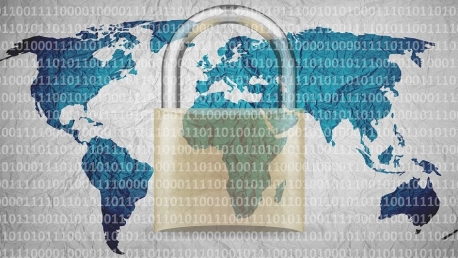Amidst the dynamic nature of modern work environments, characterized by the adoption of hybrid models, the conventional boundaries of office spaces are becoming history.
This shift presents new possibilities for collaboration and heightened work efficiency, but it also brings unprecedented challenges for IT and security teams. Against this backdrop, Jamf’s Trusted Access emerges as a beacon of device management, endpoint security, and identity and access management that empowers users while safeguarding devices, privacy, and sensitive company information.
In this article, we will navigate the changing landscape of the modern workplace, focusing on the delicate balance between security and user experience. Our exploration will center on how Jamf’s Trusted Access solution provides holistic protection while ensuring uninterrupted productivity.
The Transforming Workplace Landscape
There is a significant shift underway for modern work environments—a redefinition of how individuals collaborate and engage in work-related activities. Because of this transformation, security is a paramount concern for organizations, prompting security teams to navigate the complex task of upholding data integrity and safeguarding sensitive company information.
As collaboration goes beyond physical confines into cloud-based interactions like remote work calls has led to a shift from conventional security measures, such as firewalls, to contemporary approaches like identity verification and robust encryption.
Additionally, mobile devices as productivity tools introduce a new frontier for security vigilance. Cyber threats, especially phishing, exploit communication channels, targeting human vulnerabilities. The rise of app-based work environments, mobile ransomware, and unsecured public Wi-Fi connections have further heightened the threat landscape. Malicious actors capitalize on vulnerabilities in device security and user awareness, which makes comprehensive security strategies a must-have for organizations.
In this era of digital transformation, security must evolve in parallel with the current threats. A proactive approach that combines effective solutions, adaptive strategies, and technological integration becomes imperative. To navigate this, IT and security teams must tailor strategies to secure systems and data while cultivating trust and confidence among their users.
Striking the Security-User Experience Balance
As organizations traverse the contemporary work landscape, a quest to strike an optimal balance between security and user experience emerges.
While IT teams bolster security, they must tread carefully to avoid creating obstacles that inadvertently frustrate users. Complex login processes and incessant password requests can transform routine tasks into burdensome endeavors. Conversely, prioritizing user convenience without security considerations can render companies susceptible to cyberattacks, as weak passwords and excessive access sharing may expose sensitive information.
By blending vigilance with empathy, organizations can establish an environment where all individuals can work safely and efficiently.
Fortifying Robust Endpoint Security Measures
From phishing campaigns targeting employees working from home to potential breaches stemming from unsecured networks, organizations must implement state-of-the-art encryption, firewalls, and advanced intrusion detection systems to protect sensitive data and ensure the integrity of their digital infrastructure. Innovations such as biometric authentication and adaptive access can boost security efforts by distinguishing between authorized users and potential threats, thereby elevating the overall level of protection.
Embracing a User-Centric Design and Collaborative Culture
Incorporating user-centric design principles is paramount in security implementations. This entails crafting intuitive interfaces that guide users toward secure choices which yields systems that seamlessly integrate user-friendliness with robust security. By presenting users with clear prompts, simple yet effective security measures, and intuitive navigation paths, organizations empower employees to make secure choices without feeling burdened by complex security protocols.
However, intuitive interfaces alone do not suffice; fostering a culture of communication is equally vital. Establishing this balance requires collaboration between IT teams, security experts, and users. Regular feedback from employees, coupled with assessments of both user experience and security measures, can unveil potential issues and vulnerabilities. This ongoing dialogue ensures that user needs are met while maintaining the highest level of protection for business data.
Ultimately, achieving equilibrium between security and user experience is not just merely an aspiration—it’s a necessity. A workplace that empowers users while safeguarding digital assets is an attainable reality with the right solutions and tools.
Introducing Jamf’s Trusted Access: A Unified Solution
In the pursuit of harmonizing security and user experience, Jamf’s Trusted Access solution emerges as a transformative enabler. It stands as an embodiment of modern device management, user identity verification, and endpoint protection, seamlessly blending security with user experience. Designed to address the challenges faced by IT and security professionals, Trusted Access offers a multifaceted approach that ensures only authorized users, on enrolled devices, that are secure and compliant, can access sensitive company data. This is achieved without compromising either productivity or data integrity.
Ensuring Device Integrity
Trusted Access attains excellence by instituting stringent access controls. This means that only verified and enrolled devices, whether corporate-owned or BYO (Bring Your Own), are granted permission to critical business applications. This proactive strategy safeguards against unauthorized access, mitigating potential threats originating from unsecured endpoints. The outcome is a fortified ecosystem that empowers IT teams with amplified control and enhanced oversight over device access.
Empowering User Identity Security
At the core of Trusted Access lies its adept utilization of cloud-based user identity management. This dynamic security framework acts as an impenetrable shield against data breaches and unauthorized access attempts. Prioritizing user verification, Trusted Access effectively curtails the risk of data compromise, while concurrently simplifying access to vital resources.
Providing Vigilant Threat Monitoring
Trusted Access extends its protective umbrella by offering vigilant threat monitoring, regardless of a device’s location or network. This approach guarantees the timely detection and analysis of both on-device and in-network threats. The result is swift identification and mitigation of anomalies and vulnerabilities, thwarting potential security incidents before they escalate.
Dynamic Risk Assessment and Remediation
A distinctive feature of Trusted Access lies in its continuous risk assessment capabilities. It continually evaluates device security postures and promptly blocks access upon detecting potential compromises. This strategy, combined with on-device threat remediation, ensures that users remain productive while maintaining the highest level of security hygiene.
Addressing Key Challenges
Trusted Access strategically addresses two core challenges faced by modern organizations:
- Protects Organizational Data
By allowing access only to authenticated users on secure devices, Trusted Access mitigates the risk of data leaks and vulnerabilities. This focused approach bridges security gaps and equips security teams with a robust defense mechanism to safeguard sensitive data, regardless of its location.
- Facilitates Seamless Productivity
Trusted Access places user experience at the forefront by offering seamless integration of data access across various platforms. This guarantees uninterrupted workflows and supports a diverse, dispersed workforce, which ultimately contributes to increased productivity and employee satisfaction.
Main Benefits
Jamf’s Trusted Access is underpinned by a range of impactful benefits:
- Tech Stack Consolidation: The solution consolidates multiple capabilities into a single-vendor offering, effectively replacing up to 18 individual tools. This feature simplifies management and reduces complexity for IT teams.
- Holistic Data Approach: By safeguarding organizational data regardless of its location, Trusted Access bridges security gaps and upholds the integrity of critical business information. This is crucial for maintaining compliance with data protection laws and regulations.
- Apple-Centric: Trusted Access prioritizes an Apple-first, Apple-best experience, ensuring compatibility and reliability with every new OS release. This appeals to a wide range of users and their platform preferences.
- Enhanced Productivity: By preventing disruptions in end-user workflows, Trusted Access boosts productivity, guaranteeing uninterrupted access to resources from anywhere.
The Bottom Line
Jamf’s Trusted Access is more than another zero-trust concept—it is a transformative approach that harmonizes security and user experience. In an era where the boundaries of work extend beyond traditional settings, Trusted Access enables organizations to create a secure and agile workspace. Jamf’s offering serves as a beacon for IT and security teams in search of a solution that not only safeguards company data but also empowers users, all while embracing the dynamic nature of the modern workplace.








